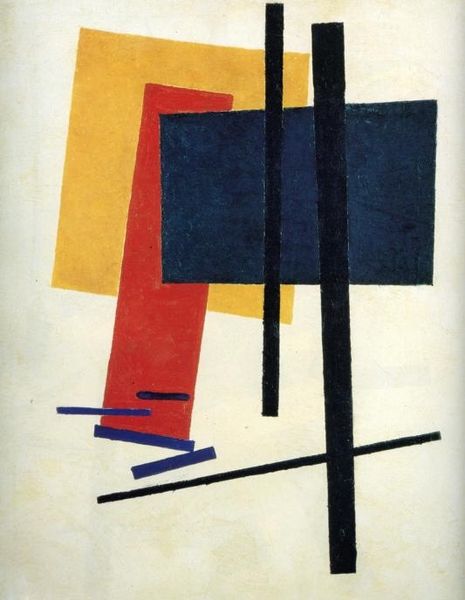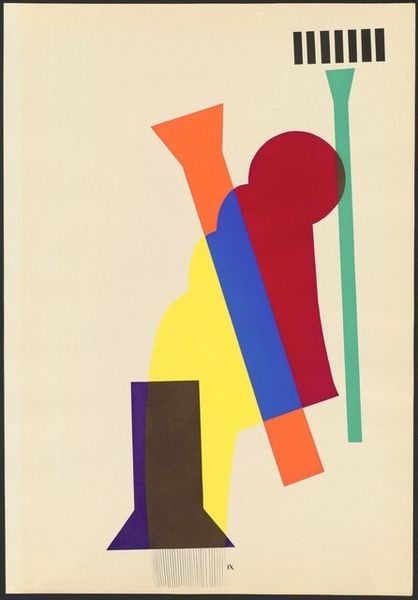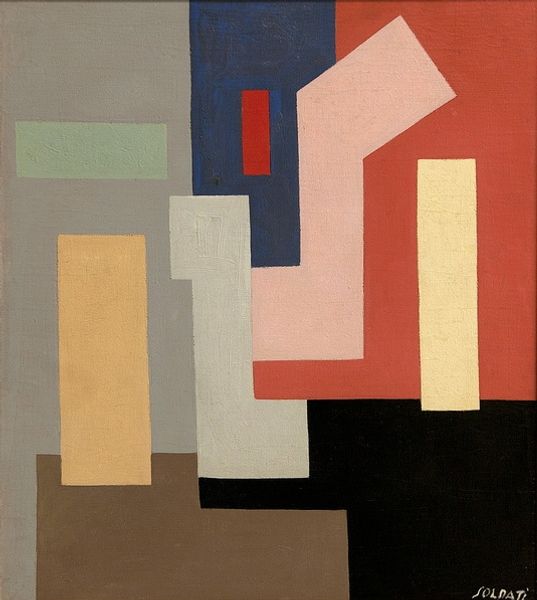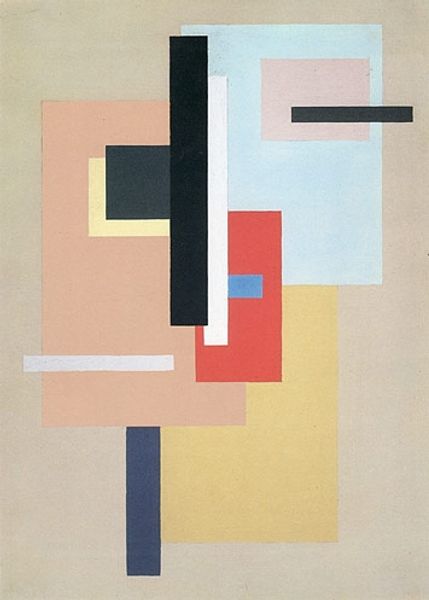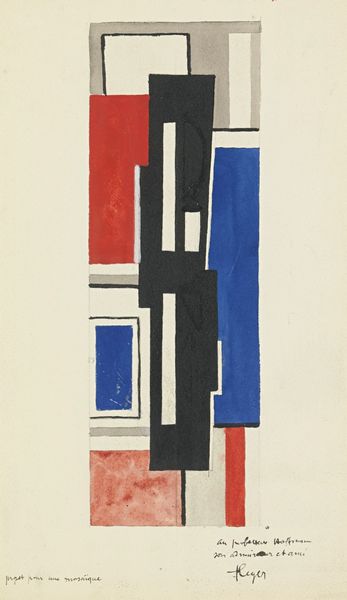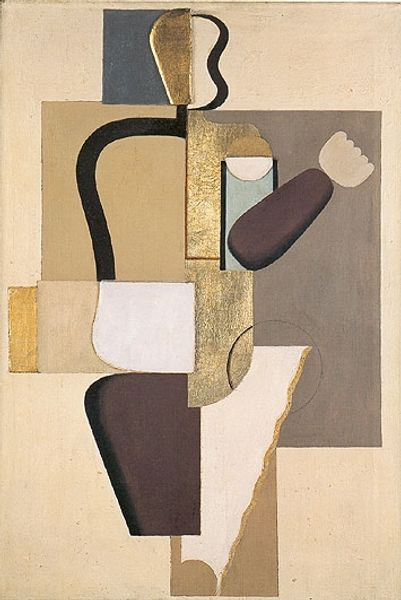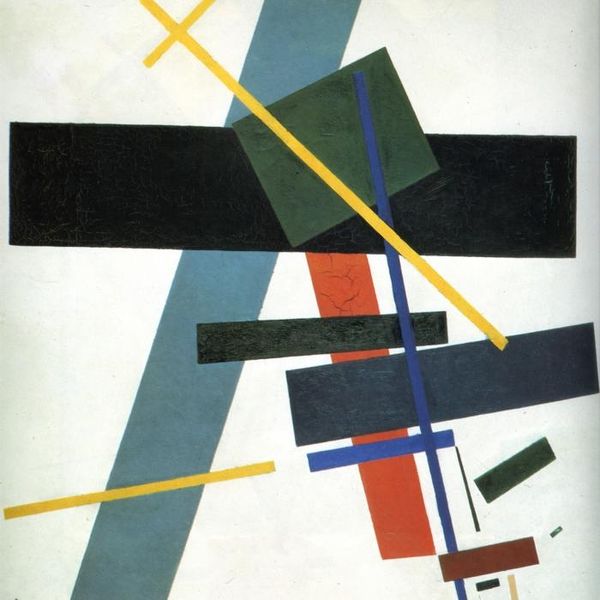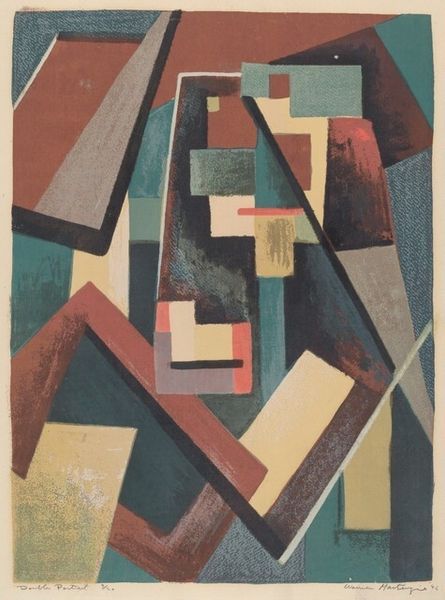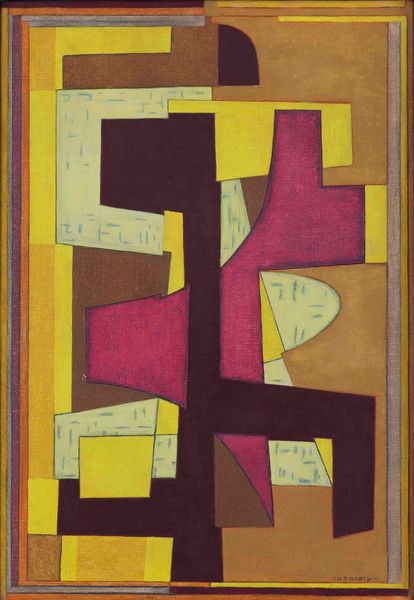
painting
#
painting
#
abstract
#
form
#
geometric-abstraction
#
line
#
bauhaus
#
modernism
Copyright: Public Domain: Artvee
Curator: This is László Moholy-Nagy’s “E-Bild,” painted in 1921. It is a compelling example of geometric abstraction within the Bauhaus movement. Editor: Stark and primary! The sharp lines against that muted beige background create a very modern feel, even a century later. It looks like it’s still in progress…almost like an unfinished tech schematic. Curator: The Bauhaus was all about uniting art, craft, and technology. The clean lines and geometric shapes speak directly to that industrial aesthetic. Notice how Moholy-Nagy reduces forms to their bare essentials. Editor: Yes! Look how the simple use of line and block defines not just shapes, but also implied spatial relationships. The “E,” the verticals…it all builds this shallow but definite plane. Are those subtle pencil markings in the lower corner too? Curator: Interesting observation! It also highlights Moholy-Nagy’s commitment to experimentation and his vision of art integrated with modern life. He moved away from traditional artistic notions, inviting new perspectives to embrace social change. Editor: Absolutely, I get that. He seemed to want to dismantle any sentimentality, even within abstract form itself. It’s cerebral rather than expressive; each line and shape perform a structural function within a calculated whole. Curator: Exactly! Consider how this piece challenged conventional artistic boundaries in Weimar Germany, a period rife with political and social turmoil. His functional design aesthetic was incredibly forward-thinking for the time. Editor: Knowing its history provides a new depth to it. But ultimately, it's that formal interplay of shape and color that really gets me. It manages to feel both rigid and somehow dynamic, despite the simplicity of means. Curator: Seeing the work in this historical context makes its impact clear: “E-Bild” wasn't just a painting; it was a manifesto for a new way of thinking about art and its role in society. Editor: I appreciate how the form is inseparable from its revolutionary intent. Analyzing both the art and social environment enhances its significance so powerfully.
Comments
No comments
Be the first to comment and join the conversation on the ultimate creative platform.

